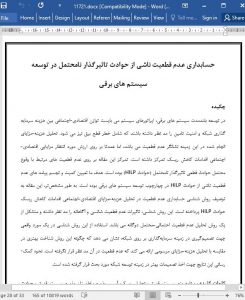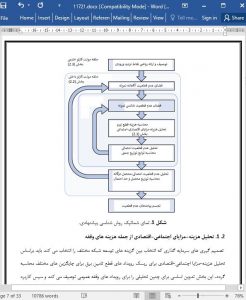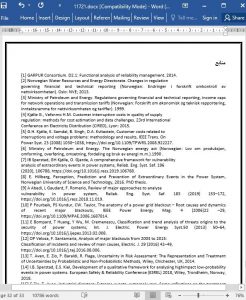Abstract
In the long-term development of the electric power system, system operators should consider the socio-economic balance between grid investment costs and security of supply, including the risk of power supply interruptions. Cost-benefit analyses conducted for this purpose are associated with many uncertainties but have traditionally focused on the expected value of the net socio-economic benefits of risk-reducing measures. This article focuses on the large uncertainties that are associated with the possible occurrence of high-impact low-probability interruption events (HILP events). The objective is to quantify and visualize the implications of uncertainties due to HILP events in the context of power system development. More specifically, this article describes a methodology accounting for uncertainties in socio-economic cost-benefit analysis of measures for reducing the risk of HILP events. The methodology accounts for the contributions of both aleatory and epistemic uncertainties and comprises a hybrid probabilistic-possibilistic uncertainty analysis method. Applying the methodology to a real case involving a grid investment decision, it is demonstrated how it provides additional insight compared to conventional cost-benefit analyses considering expected values where uncertainties are not accounted for explicitly. It is furthermore discussed how these results can help to better inform grid development decisions.
1. Introduction
For an electric power transmission system, system development involves activities carried out by the transmission system operator (TSO) to ensure safe system operation, provide a high level of security of supply and contribute to the socio-economic efficiency of the system [1]. It is a part of long-term power system planning, considering planning horizons up to several decades into the future, and involves choices between different grid investment alternatives. Grid investment costs can be substantial and are ultimately socialized to the end user through the grid tariffs. Several countries have introduced interruption costs in their quality of electricity supply regulation to achieve a better socio-economic balance between grid costs and security of supply. To use Norway as an example, a cost of energy not supplied (CENS) scheme is implemented by which interruption costs are estimated and deducted from the grid companies’ revenue caps [2–5].
5. Conclusions
In this article, we have proposed a methodology accounting for uncertainties due to HILP events in socio-economic cost-benefit analyses. The methodology has been exemplified by a concrete case where a TSO considers investing in an additional transmission line to reduce the risk of HILP events. For this particular case, the expected net socio-economic benefits of these risk-reducing measures were negative (− 100⋅106 NOK). An additional transmission line is therefore not socio-economic cost-effective according to a conventional cost-benefit analysis only considering expected values and neglecting epistemic uncertainties.











